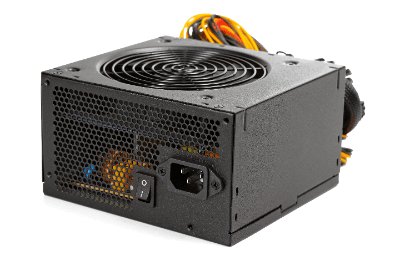What Is a Power Supply System?

A power supply system is a device that converts an AC power source, such as an electrical outlet, into a stable DC power source.
AC power sources such as electrical outlets, whether for industrial or residential use, are high voltage and cannot be used for electronic equipment as they are. Therefore, it is necessary to convert the voltage to a DC voltage suitable for the equipment.
Power supplies are generally classified into two types: switching type and transformer type, but switching type is currently the mainstream due to its small size, lightweight, and high efficiency.
Uses of Power Supply Systems
As the name suggests, power supply systems are a device used to supply power. Since they are used to convert AC power to DC voltage suitable for electronic equipment, they are built into almost all electronic equipment found in every home.
It is used in every electronic device so that when you connect a cable to a wall outlet, you might expect to find power supply systems on the other end of the cable.
Since it is a device that can regulate voltage, power supply systems can provide power voltage without the need for a transformer.
Principle of Power Supply Systems
In a transformer-based power supply system, the AC power supply system voltage is transformed to an appropriate voltage by a transformer and rectified to DC by a rectifier. The rectifier rectifies the rectified voltage to DC, which is then smoothed by a capacitor to supply a stabilized DC voltage.
In a switching-type power supply system, the AC power supply system’s voltage is converted to DC, which is then converted to pulsed high-frequency power by a high-speed switching circuit. This high-frequency power is rectified and smoothed using a transformer to obtain a suitable DC output voltage.
The transformer method can suppress noise to a small level, but it is large and heavy, and its power efficiency is poor. In contrast, the switching method can be highly efficient and lightweight, but it is noisier.
Since power supply systems cannot operate at 100% efficiency, losses are converted to heat, and heat is generated. The amount of heat generated is generally determined by the following equation:
Heat generation (W) = input power – output power = (output power/efficiency) – output power
If the amount of heat generated becomes too great, it may cause a drop in output power or a failure.
Other Information on Power Supply Systems
1. Making Your Power Supply Systems
Power supplies are simple in structure and can be made by the user. The materials required are resistors, smoothing capacitors, and diodes.
First, the receiving voltage is dropped by the resistor. Then, the diode is used to change it to a direct current. At this point, two diodes are required if full-wave rectification is desired.
Finally, a smoothing capacitor is connected in parallel with the load to complete the process. A resistor can be substituted for the transformer. The capacity of the power supply systems is determined by the capacitance of these individual parts. If multiple loads are to be connected, more capacity is required.
2. Small Power Supply Systems
Industrial power supplies are generally housed in control panels and are small enough to be attached to the panel. Currently, DIN-rail mounting is the mainstream.
In homes, power supplies are the AC adapters used to charge PCs and smartphones. They have been miniaturized and are now palm-sized. In audio equipment, power supplies are used for amplifiers. They are also palm-sized and can distribute power to as many as eight devices.
3. Noise Caused by Power Supplies
In terms of audio equipment, power supply systems are a device that supplies power to effectors and other devices. Effectors are devices that add effects such as reverbs and low-pass filters to music. As a classification, they can be divided into analog and digital devices.
A single power supply system itself can supply power to any number of effectors as long as they are under the capacity. However, if analog and digital effectors are connected to the same power supply systems, noise will be generated.
The cause is the way digital effectors work. Digital effectors use electronic circuits to convert audio and electrical signals with choppers and other devices to create square waves. Square waves distort analog waveforms, resulting in audio noise.
To prevent noise, separate the power supply systems for analog and digital effectors. By electrically isolating them, noise caused by square waves can be eliminated.